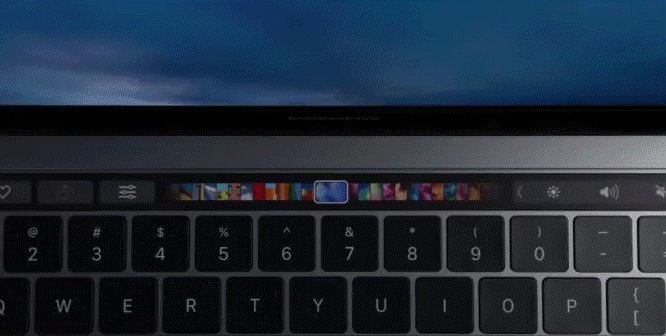
If there’s one thing I hate it’s list posts about apps. I love the idea, but the execution so often centers around apps that most of us are already using. This renders these types of posts useless, as I could easily search the top 10 in the Mac App Store without the additional clicks.
Today, I want to look at some familiar, but criminally underused favorites, as well as a handful of apps you probably aren’t using. Let me know how I did in the comments below.
Polarr [$2.99]
Europe’s leading tech festival
TNW Conference is back for its 12th year. Explore our speakers and attendees now.

Polar is a lightweight image editor that serves the basic needs of anyone who captures images mostly via smartphone.
It’s not as powerful as Photoshop, or even Pixelmator, but it’s simple, approachable, and effective. Unlike the semi-convoluted featuresets of bigger image editors, Polarr puts tools to adjust skin tone, whiten teeth, and make more standard edits — like brightness/contrast, saturation, exposure — at your fingertips. It’s got over 100 filters, many of which are far better than you could find at Instagram.
Bear [Free]

Bear is everything we thought Mac’s native ‘Notes’ app would be by now. It’s a feature rich note-taking tool that has a lot of cool customization options, a robust style menu all hiding under a single icon, and the ability to drag and drop files right on to the interface.
The addition of search triggers — type @task to find your todo lists, or @files to find all notes with attachments — makes for a more Evernote-like note-taking tool than the default option. It’s also free, and a much better looking alternative than Mac’s mostly underachieving alternative. Multiple share options, programming support for over 20 languages, and hashtag sorting are just icing on the cake.
It’s also available on the iPhone and iPad.
XCOM 2 [$49.99]

Aliens have descended on Earth and its your job to keep them at bay. This turn-based strategy game takes a top-down view of the action and provides an interesting perspective to the typical run-and-gun alien shooter. Once inside, you’ll build an army, research new technologies, and rack your brain over how to get out of some truly sticky situations without becoming food for Sci-Fi movie reject.
XCOM 2 is some of the most fun I’ve had gaming on the Mac all year, and it’s definitely one of the best games of 2016.
Bartender 2 [$15]
Bartender is a simple app that does exactly what it’s supposed to do: unclutter your menubar. When open, the app adds a tiny tuxedo icon to the menubar that, once clicked, adds a drop-down window to show the apps that were normally contained there. It’s customizable, light-weight, and far more appealing visually than looking at my out-of-control menubar.
Dropzone 3 [$1.99]

Dropzone is sort of the Swiss Army Knife of moving files between folders, devices, or to the cloud. The drag-and-drop interface allows you to drop files, images, video, and more to social media (Twitter, Flickr, Facebook, or Messages), FTP or Amazon S3, Imgur, or AirDrop. Or, maybe you don’t know what you want to do with it just yet, and in that case you can just leave it in Dropzone until you decide.
The application is also infinitely customizable with a bit of programming knowledge (Ruby or Python).
Pixelmator [$29.99]

Pixelmator was my favorite app of last year, and one I highly recommended in a year-end post. This year, it’s only gotten better.
It’s not Photoshop, so comparing it to the world’s foremost tool for pro photographers is doing it a great injustice. For the beginner to intermediate photo editor, though, there’s nothing better. It’s lightening-quick, and the tools all see far more approachable at a glance than more complex (and expensive) editors. It’s got nearly everything you need and the price is certainly right.
Mini Metro [$9.99]

If minimalist strategy games are your thing, there were none better in 2016 than Mini Metro.
The game sees you start with three transit stations you need to connect to make functioning subway lines. As the city grows, you’ll add more stations, more lines, and try to keep all of your cities citizens happy — a difficult task.
1Password [$64.99]

2016 was the year of password breaches. While we can’t avoid thieves making off with passwords, we can certainly limit the damage by not reusing them. 1Password stores all of your passwords, helps you create strong new ones, and even secures notes, credit card data, and software licenses behind strong encryption that syncs across devices.
Spark [Free]

I waxed poetic about Spark when it first released on the Mac a few weeks ago, but I’m happy to recommend it again here. Spark, in my opinion, is the best email app on the Mac, and I’ve tried them all.
What makes Spark so great is both in simplicity and power. the simplicity element has become a hallmark for all email apps on the Mac, and Spark’s minimal design follows suit nicely. In fact, most won’t be able to pick Spark, Airmail, or Polymail out of a lineup if they only had a quick glance in which to do it.
Simple is only good when it’s effective, though, and Spark is certainly built to do the job. Endless customization options are at your disposal and if Spark can’t do it, chances are it can’t be done.
Reeder 3 [$9.99]

The death of Google Reader left a chasm-sized hole in my heart. After jumping on the Reeder bandwagon, I’ve almost forgotten it existed. Reeder can do everything Google Reader did, and then some. With themes, gestures, and customizable shortcuts, it’s a customizable solution for the most devoted news watchers that’s just unmatched on the Mac.
The ability to sync with every RSS service from Feedly to Instapaper is a nice plus, as is the ability to share content just about anywhere with dozens of integrations.
Oh, and you can read news on it too. There’s that.
Roller Coaster Tycoon [$19.99]

Roller Coaster Tycoon was one of my favorite PC games growing up. Its newest iteration on the Mac brings back all of those classic feels. It’s as fun as ever, and it really looks great on current-gen hardware. It’s not Witcher, by any means, but graphically it looks better than it ever has, and the fun factor is still a 10.
It’s also great at bringing out your slightly murderous side, as this guy explains.

Day One [$39.99]

It’s hard to talk about a journaling app without answering the question — why not just blog on WordPress, Tumblr, or Medium? I don’t have a good answer to that, but after trying Day One myself, I can see the appeal. It’s a really great solution for those looking for a private space to jot down thoughts, memories, and keep an archived tally of life in a really great-looking package.
While web-based services have options to mark posts as private, perhaps it’s the piece of mind Day One offers in knowing that it never made it to the web in the first place. Regardless, it’s an Editor’s Choice for 2016 at the Mac App Store, and the beautiful interface and robuts tools make it easy to see why.
Daisy Disk [$9.99]

Daisy Disk is a simple tool that answers that age-old question: where did all my hard drive space go?
This insightful peek into what you’re storing, and where you’re storing it, offers beautifully-designed glimpses into what you’re storing, and where. It’s easy to burn through hard drive space and only realize it once you get that dreaded pop-up warning you that you’re running out. Daisy Disk makes it easy to see what you can clear, and where it’s residing.
It’s a must-have tool that, aside from its obvious utility, is wonderfully packaged and gorgeous to look at.
Better Rename 9 [$19.99]

One of my pet peeves when uploading my iPhone photos to the Mac is the naming convention. Names like photo001.jpg, photo002.jpg, etc., are fine when I’m using them immediately and knew they came from the zoo. Weeks later though, when I’ve uploaded more photos it becomes a real pain in the ass to laboriously search through them all to figure out what photos came from where.
With Better Rename 9, you can batch process images to add a prefix, like “December Zoo Trip” to the front of your photos. It takes the guesswork out of sorting and it’s all done in mere seconds.
Life is Strange [$4.95]

Although it came out last year, Life is Strange is still bringing fresh updates to the table through downloadable episodes you can purchase in-app.
While the Mac isn’t known to be a gaming powerhouse, it does offer a handful of really good titles. Life is Strange is among the best. In the game, you follow Max Caulfield, a photograper that discovers she can rewind time. She takes full advantage of the gift as she attempts to save her best friend, Chloe Price. I’ll stop right there. With a game like Life is Strange, the less you know, the better.
Doo [$3.99]

I thought we were in the post to-do list days before I found Doo. I had given up on fiding the perfect solution and resigned myself to the built-in ‘Reminders’ app in my iPhone and on my Mac. Doo, though, changed all that.
The interface isn’t just beautiful, it’s far more efficient than most. The card-based design allows you to create to-do’s in much the same way any other app does, but swiping up to complete, down to snooze or left/right to skip fills me with a sense of satisfaction for completing an image — or guilt for snoozing it — that a simple checkbox never did. And the cross-device support allows me to stay up-to-date no matter where I’m at.
Fantastical 2 [$39.99]

A year later, Fantastical is still my go-to calendar app. Its natural language entries, and cross-device support ensure that I never again have to — gasp — open the default calendar on the Mac.
While I once scoffed at the idea of paying $40 for a calendar app, it’s saved me something far more valuable — time. As someone that relies on a calendar multiple times daily, it’s a purchase that pays me back each day that I use it. With Google Calendar, iCal, and Outlook support, Fantastical can sync with just about anything, and it provides a gorgeous interface and intuitive entry system that’s unmatched anywhere else.
The to-do system is also a nice touch, but it’s not as nice as Doo.
Giphy Capture [Free]

Of all the gif-making tools I use, Giphy Capture is the easiest. Simply drag a window over the desired area, resize it to fit what you want to capture, and hit record. Once complete, you can resize, trim, and view/edit the file size/image quality without ever leaving the interface.
From there, you can save the GIF to desktop, share it on social media, or host it at Giphy.
Human Resource Machine [$9.99]

I wonder how many people play Human Resource Machine and never realize they’re learning to code?
The game is a cute puzzler that teaches you to automate office processes so you can avoid working. It starts simple, but gets progressively harder as you teach your little minions to do repetitive tasks without your intervention. Along the way, you’re learning simple programming logic that programmers use every day.
Squash [$19.99]

Of all the image compression tools out there, Squash is hands-down the best I’ve ever used. I’ve lowered images sizes by as much as 4x without the huge drop in image quality you’d expect from such a great compression. The tool is ideal for web designers, but anyone that uploads images anywhere online could benefit from decreasing the file size. Whether it’s shaving megabytes off each image you put in Dropbox, or keeping your blog running quickly — Squash does exactly what it says it does.
http://thenextweb.com/apps/2016/12/27/the-20-best-mac-apps-and-games-2016-edition/ via http://thenextweb.com #CIO, #Technology









